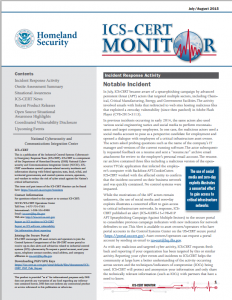
The 18-channel BQ79718-Q1 is provided in a tiny 10 mm × 10 mm, 64-pin thermally enhanced thin quad flat package (HTQFP). More information is available on the datasheets for the BQ79718-Q1 and BQ79731-Q1.Īutomotive engineers can evaluate the battery cell monitor using TI’s BQ79718-Q1 evaluation module ( BQ79718EVM-049). This enables a real-time snapshot of battery health, says TI.īecause of this level of synchronization, BMS designs can perform electrochemical impedance spectroscopy, which can extract info on a battery cell’s core temperature, battery aging, and the battery’s state of charge. According to TI, this means the EV’s BMS can do instantaneous monitoring of battery pack power. Meanwhile, the devices enable voltage and current synchronization at 64 µs. The BQ79731-Q1 boasts battery pack current measurement with an accuracy of 0.05%. Used together, the two chips provide what TI claims is the clearest picture possible to measure accurate state of charge, but also the state of health at the individual cell and pack level. The BQ79731-Q1 IC allows measurement of the battery pack current down to 0.05% of accuracy. It can measure voltage across fuse, contactors and check isolation voltage in battery junction box (BJB) systems. The device embeds two current sense paths. TI’s other new device, the BQ79731-Q1, can be used to measure divided down high voltage nodes in a battery system.
#Battery monitor ics drivers
So this ☑5 miles gives a similar user experience for EV drivers because that translates to 5% of 300 miles.” “We all drive cars and even in a gasoline-powered car situation, we typically won't leave 5% in the gas tank before going to the gas station. With TI’s new BQ79718-Q1’s accuracy of ☑ mV, drivers only have to face a ☑5 mile uncertainty when it comes to knowing when their battery is truly in danger of running out of charge, says Wong. “Considering that an average EV’s range is 300, that’s a good chunk of mileage paranoia that drivers have to suffer.” “At that same ☑0 mV accuracy applied to an LFP battery pack, the differential translates to ☗8 miles,” says Wong. Image used courtesy of Texas Instruments (Click image to enlarge) With an OCV measurement accuracy of ☑ mV, the BQ79718-Q1 enables greater effective range for EVs. As shown in the table in the image below, with ☑0 mV accuracy in the MMC battery pack you have to budget for a ☖ mile difference in EV range. The discharging curve of an LFP device is very flat compared to an NMC battery. New Trade Offs to Consider with LFP BatteriesĪll that said, LFP batteries have a significant drawback, says Wong.

LFP batteries are up to 20% cheaper than NMC batteries, mostly because iron is a readily available metal. Now the industry is switching to LFP (lithium iron phosphate) batteries. “That accuracy was very good when the whole industry was using NMC (magnesium nickel cobalt) EV batteries,” says Wong. Putting things into perspective, Wong says that TI’s previous generation of cell monitor offered an accuracy of ☓ mV. TI says its BQ79718-Q1 allows carmakers to achieve high-performance battery cell voltage measurements down to ☑ mV of open circuit voltage (OCV) accuracy. Doing so requires accurate measurement of the battery systems.Īlong those lines, TI claims its new automotive battery cell and pack monitors provide the most accurate measurement capability available. According to TI, the most important factor in designing a BMS for an EV is to enable auto manufacturers to know the true range of a vehicle. It’s clear that widespread adoption of EVs is tied closely with vehicle range-how far an EV can drive before needing to recharge its battery system. In this article, we discuss the relationship between battery monitoring accuracy and EV range, we examine the key details of TI's new chips, and we share insights from our interview with Sam Wong, general manager for BMS at TI. According to the company, these ASIL D-compliant chips are vital to meeting the needs of today’s EV BMS architectures.Īdvanced monitoring is critical for today’s EV battery management systems.
CES runs January 5-8 this week in Las Vegas, NV, but CES Media Days are already underway, running yesterday and today (January 3-4).Īs part of the company’s battery management systems (BMS) portfolio, TI has launched its BQ79718-Q1 battery cell monitor IC and BQ79731-Q1 battery pack monitor IC. We kick off our coverage of the CES (Consumer Electronics Show) this week with today’s announcement from Texas Instruments (TI) of a pair of ICs aimed at maximizing the driving range of electric vehicles (EVs).


 0 kommentar(er)
0 kommentar(er)
